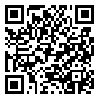BibTeX | RIS | EndNote | Medlars | ProCite | Reference Manager | RefWorks
Send citation to:
URL: http://hayat.tums.ac.ir/article-1-958-en.html
Background & Aim: Reproductive behavior of a society can be studied in different ways. One of these ways is to check the birth intervals. The aim of the present study was to assess the childbirth along with factors influencing childbirth behavioral patterns in Ahwaz .
Methods & Materials: In this study , factors affecting birth intervals of women aged 15-49 were investigated . To achieve this goal, given the nature of the birth intervals, the accelerated failure time model was applied. To estimate the parameters of this model, the R statistical software was used .
Results: Results indicated that women's educational level , husbands' ethnicity , place of residence , use of contraceptives , age at marriage and pregnancy status were factors significantly influencing first birth interval. Furthermore, women's ethnicity, contraceptive use, number of abortions or stillbirths, pregnancy status , duration of breast feeding and type of childbirth were the most important variables affecting the second birth interval. Also, husband's ethnicity, contraceptive use and duration of breast feeding had significant effects on the third birth interval in this study .
Conclusion: Comparing the results of this study with those of previous studies shows a recent decline in pregnancy acceleration and an increase in average birth interval. In other words, changes in socio-economic and cultural statuses have caused longer birth intervals and fertility decreases .
| Rights and permissions | |
 |
This work is licensed under a Creative Commons Attribution-NonCommercial 4.0 International License. |





